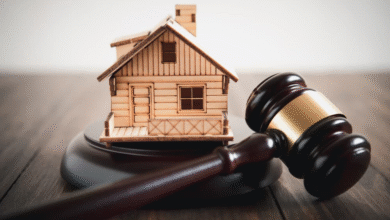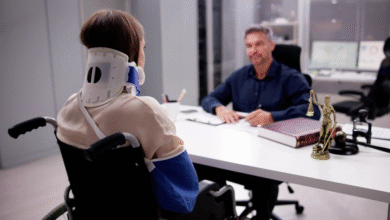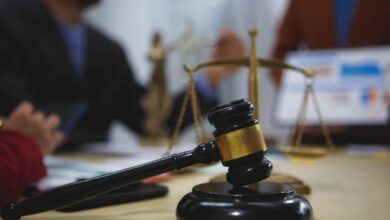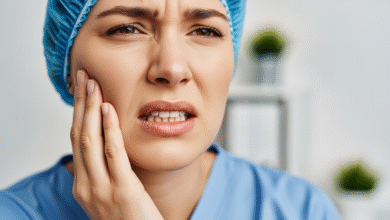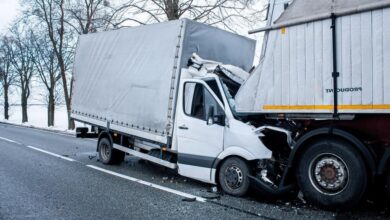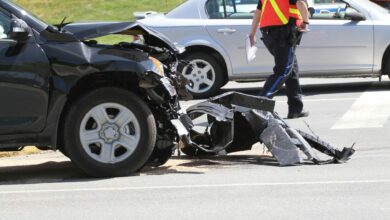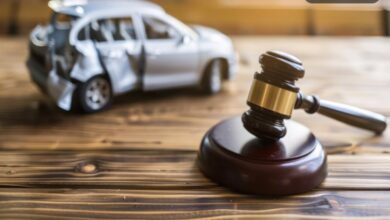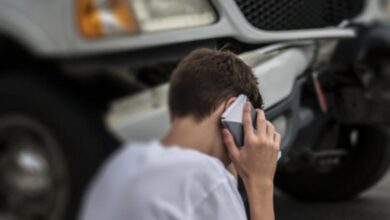Slip, Trip, and Fall: What Property Owners Are Legally Responsible For (and What They’re Not)
Learn what property owners are legally responsible for in slip, trip, and fall cases—and what liability they don’t have. Know your rights and risks.
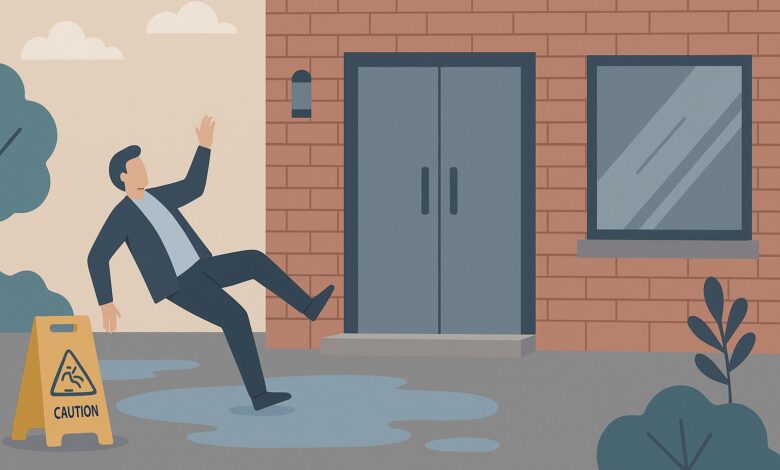
Legal Framework for Property Owner Responsibilities
In most communities, property law places a clear obligation on owners to maintain a safe environment for people who enter their property. It includes not only keeping floors, hallways, and exterior walkways free from dangers but also addressing issues as they arise. Regular attention is required to reduce hazards—like cleaning up spills, repairing uneven surfaces, and ensuring proper lighting—in both public and private settings. Despite these responsibilities, not every fall is the owner’s legal fault. The determination depends on thorough details about what the owner did to prevent accidents, how long the hazard existed, and whether visitors acted reasonably. Often, individuals who seek clarity after these events turn to legal professionals such as Los Angeles personal injury attorneys to evaluate their circumstances and explain their rights.
Establishing legal liability requires more than just proving a fall occurred on someone’s property. It must be shown that the owner breached their duty to maintain safe conditions and that this breach directly caused the injury. According to the Centers for Disease Control and Prevention (CDC), falls send millions to emergency departments each year, resulting in billions of dollars in medical expenses and lost work.
Visitor Status: Invitees, Licensees, and Trespassers
Determining a property owner’s liability after someone falls largely hinges on the reason for the individual’s presence on the property. Visitors are classified into three main categories: invitees, licensees, and trespassers. Invitees are those who are on the property for business purposes or for the owner’s benefit, such as shoppers or delivery personnel. Since their presence is advantageous to the owner, this group is given the highest standard of care. Owners are required to actively identify and address dangerous conditions or inform the invitees about them. Licensees are individuals who are allowed on the property for social or non-commercial purposes. In this case, owners must warn licensees about non-obvious dangers but are not always obligated to inspect for new hazards. Trespassers, on the other hand, enter the property without permission or legal right, and the law generally only mandates that owners refrain from intentionally causing harm. However, an important exception applies to children; if there is an “attractive nuisance,” such as a swimming pool, even trespassing children may be entitled to a higher level of care. These classifications ensure that legal responsibilities are aligned with the relationship between the property owner and the visitor.
Common Property Risks That Lead to Falls
Both commercial and residential properties can harbor hidden dangers that lead to slips, trips and falls. Common risks include wet or freshly mopped floors, buckled carpets, cluttered or poorly lit hallways, worn stair treads, missing handrails, and icy or cracked sidewalks. Out-of-place objects(like loose cords or area rugs)are frequent culprits, especially in high-traffic or high-turnover areas like stores and apartment complexes.
According to the National Safety Council, falls are the second leading cause of unintentional death in the workplace, and they account for a large proportion of general liability insurance claims. By identifying and addressing these hazards during routine inspections, property owners can drastically reduce their exposure to legal risk and, more importantly, prevent costly and painful injuries.
When Are Property Owners Legally Liable?
Courts assess several points when deciding if a property owner is legally liable after a slip or fall. Was the hazard a known problem or one that should have been discovered during a reasonable inspection? Was there enough time for the owner to learn about and correct the hazard? Did the owner fail to warn visitors about difficult-to-see dangers, such as a leak that leaves water on a tiled floor or broken stairs without a handrail?
Owners who establish clear protocols for maintaining their property and responding to hazards are less likely to be found negligent. Conversely, owners who ignore repeated complaints or visible signs of problems are at significant risk. For instance, if a grocery store is reported multiple times about a leaky cooler that pools water in the aisle and someone eventually falls, the timeline and documentation of the response—or lack thereof—will be key evidence.
When Are Owners Not Liable for Slips, Trips, and Falls?
Legal responsibility is not absolute, and there are notable scenarios in which owners are not held liable for slip, trip, and fall injuries. If a hazard is obvious—a bright orange warning cone around a wet spot—or if a visitor behaves recklessly or ignores posted warnings, responsibility for the accident may shift away from the owner. Sudden and unforeseeable dangers, such as a spill moments before the fall, are another common defense, especially if it is shown that the owner responded as soon as possible.
In other cases, evidence may reveal that the injured party was texting while walking or misused a marked-off area, weakening their claim. Property owners are often required to demonstrate that they exercised reasonable care under the circumstances, and visitors must also be aware of their surroundings and behave prudently.
Real-Life Cases: Context Matters
Actual legal outcomes illustrate how much context can influence a court’s judgment. There are instances where courts have sided with injured persons after finding property owners failed to apply standard maintenance practices—one classic example being spilled beverages left unattended in store aisles. However, many claims are dismissed when courts determine that the danger was “open and obvious” or when the visitor’s actions contributed significantly to the accident.
Because premises liability law is highly fact-dependent and varies by state, consulting resources or legal guides is advisable. Those navigating these issues in complex urban environments may consult personal injury attorneys for a nuanced analysis of their situation and relevant legal precedents.
Tips for Property Owners to Reduce Risk
Implementing sound prevention practices is essential for any property owner, as they serve as a robust line of defense against potential hazards. It is advisable to create a detailed schedule for regularly checking and inspecting all entryways, staircases, and high-traffic paths. Keeping thorough written records of these inspections, noting what was examined and when is crucial for accountability and ongoing safety management.
Immediate cleanup of foreseeable hazards, such as water, ice, or loose and tangled cords, should be a top priority to prevent accidents and ensure the well-being of everyone on the property. In situations where repairs may take longer to complete, such as addressing cracks in sidewalks or broken stairs, it is crucial to ensure that warning signs and barricades are not only visible but also placed in the correct locations to alert individuals to the potential hazard.
Lighting plays a vital role in safety, so it is essential to ensure that every area of the property is well-lit, especially those zones prone to shadows or with hidden steps that could pose a risk of trips and falls. Additionally, educating staff and family members about the importance of promptly reporting any identified risks is key. Encouraging a culture of vigilance and readiness to act quickly can significantly enhance the overall safety of the environment.
Moreover, maintaining well-documented maintenance routines serves a dual purpose: not only does it enhance safety, but it also provides invaluable evidence in the event of an incident that may lead to legal proceedings. Such documentation demonstrates a committed approach to safety management, showcasing that proper preventative measures are in place and that the property owner takes their responsibilities seriously. Through these efforts, a safe and secure environment can be fostered for everyone involved.
Resources and Support
Numerous organizations and government agencies provide resources for both prevention and legal clarity. The CDC’s fall prevention page and other community health organizations offer best practices on hazard identification and injury prevention. Owners and managers can use these guidelines as checklists to maintain standards and stay updated on new risks and data.
Studying the latest statistics and analysis on slip, trip, and fall incidents helps understand injury trends in various environments and evaluate whether their current safety measures are adequate. When accidents do occur, seeking experienced legal advice ensures a thorough review of one’s rights, responsibilities, and the best course of action to take. Above all, being proactive about safety benefits not only owners and guests but also the wider community.
Key Takeaways
- Property owners must maintain reasonably safe conditions on their premises, but not every slip, trip, or fall makes them legally responsible.
- Legal responsibility shifts depending on whether the injured person was invited, permitted, or trespassing.
- Consistent inspections, swift hazard corrections, and clear warnings are major factors in determining liability.
- The specific details of each incident—from hazard visibility to visitor actions—can change the legal outcome.
- Recognizing common causes of falls is critical for prevention and risk management.
- Statistics show falls are a leading cause of injury, emphasizing the need for owners to be proactive.
- Resources from national organizations help clarify standards and provide prevention strategies for both owners and individuals who have been injured.


